Related Research Articles

A ballad is a form of verse, often a narrative set to music. Ballads derive from the medieval French chanson balladée or ballade, which were originally "dance songs". Ballads were particularly characteristic of the popular poetry and song of Britain and Ireland from the Late Middle Ages until the 19th century. They were widely used across Europe, and later in Australia, North Africa, North America and South America.
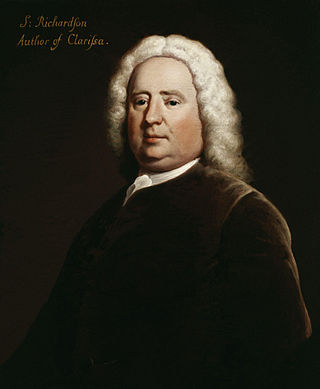
Samuel Richardson was an English writer and printer known for three epistolary novels: Pamela; or, Virtue Rewarded (1740), Clarissa: Or the History of a Young Lady (1748) and The History of Sir Charles Grandison (1753). He printed almost 500 works, including journals and magazines, working periodically with the London bookseller Andrew Millar. Richardson had been apprenticed to a printer, whose daughter he eventually married. He lost her along with their six children, but remarried and had six more children, of whom four daughters reached adulthood, leaving no male heirs to continue the print shop. As it ran down, he wrote his first novel at the age of 51 and joined the admired writers of his day. Leading acquaintances included Samuel Johnson and Sarah Fielding, the physician and Behmenist George Cheyne, and the theologian and writer William Law, whose books he printed. At Law's request, Richardson printed some poems by John Byrom. In literature, he rivalled Henry Fielding; the two responded to each other's literary styles.
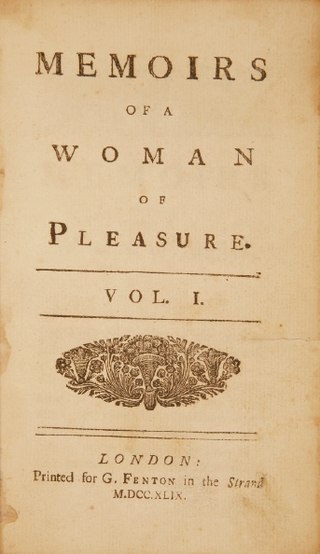
Memoirs of a Woman of Pleasure—popularly known as Fanny Hill—is an erotic novel by the English novelist John Cleland first published in London in 1748. Written while the author was in debtors' prison in London, it is considered "the first original English prose pornography, and the first pornography to use the form of the novel". It is one of the most prosecuted and banned books in history.
John Cleland was an English novelist best known for his fictional Fanny Hill: or, the Memoirs of a Woman of Pleasure, whose eroticism led to his arrest. James Boswell called him "a sly, old malcontent".
This article contains information about the literary events and publications of 1747.
Sarah Fielding was an English author and sister of the playwright, novelist and magistrate Henry Fielding. She wrote The Governess, or The Little Female Academy (1749), thought to be the first novel in English aimed expressly at children. Earlier she had success with her novel The Adventures of David Simple (1744).
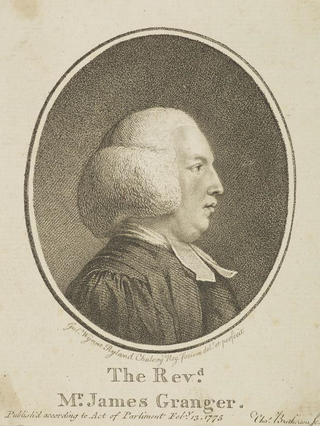
James Granger (1723–1776) was an English clergyman, biographer, and print collector. He is now known as the author of the Biographical History of England from Egbert the Great to the Revolution (1769). Granger was an early advocate of animal rights.

Clarissa; or, The History of a Young Lady: Comprehending the Most Important Concerns of Private Life. And Particularly Shewing, the Distresses that May Attend the Misconduct Both of Parents and Children, In Relation to Marriage is an epistolary novel by English writer Samuel Richardson, published in 1748. It tells the tragic story of a young woman, Clarissa Harlowe, whose quest for virtue is continually thwarted by her family. The Harlowes are a recently wealthy family whose preoccupation with increasing their standing in society leads to obsessive control of their daughter, Clarissa. It is considered one of the longest novels in the English language. It is generally regarded as Richardson's masterpiece.
Andrew Millar was a British publisher in the eighteenth century.
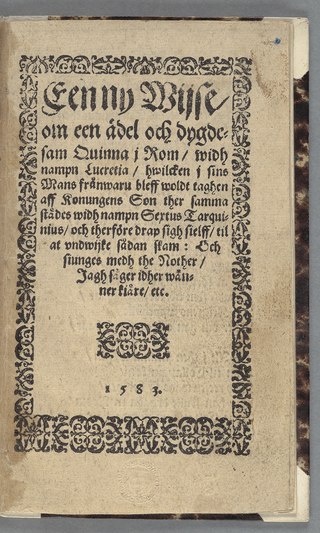
A broadside is a single sheet of inexpensive paper printed on one side, often with a ballad, rhyme, news and sometimes with woodcut illustrations. They were one of the most common forms of printed material between the sixteenth and nineteenth centuries, particularly in Britain, Ireland and North America because they are easy to produce and are often associated with one of the most important forms of traditional music from these countries, the ballad.

Pamela; or, Virtue Rewarded is an epistolary novel first published in 1740 by the English writer Samuel Richardson. Considered one of the first true English novels, it serves as Richardson's version of conduct literature about marriage.
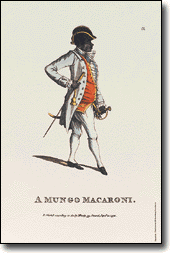
Mary and Matthew Darly were English printsellers and caricaturists during the 1770s. Mary Darly was a printseller, caricaturist, artist, engraver, writer, and teacher. She wrote, illustrated, and published the first book on caricature drawing, A Book of Caricaturas [sic], aimed at "young gentlemen and ladies." Mary was the wife of Matthew Darly, also called Matthias, a London printseller, furniture designer, and engraver. Mary was evidently the second wife of Matthew; his first was named Elizabeth Harold.
Jane Collier was an English novelist best known for her book An Essay on the Art of Ingeniously Tormenting (1753). She also collaborated with Sarah Fielding on her only other surviving work The Cry (1754).

An Essay on the Art of Ingeniously Tormenting was a conduct book written by Jane Collier and published in 1753. The Essay was Collier's first work, and operates as a satirical advice book on how to nag. It was modelled after Jonathan Swift's satirical essays, and is intended to "teach" a reader the various methods for "teasing and mortifying" one's acquaintances. It is divided into two sections that are organised for "advice" to specific groups, and it is followed by "General Rules" for all people to follow.
Alexander Donaldson was a Scottish bookseller, publisher, and printer. Donaldson was the founding publisher of the weekly newspaper, the Edinburgh Advertiser. He was also known for selling cheap copies of books after their copyright had expired in disregard to London booksellers' opinions on literary property.
Rosina is a 1782 comic opera by William Shield to an English-language libretto by Frances Brooke. The opera was written in 1771/72 but first performed at the Theatre Royal, Covent Garden, on 31 December 1782.

William Paget was an English actor and author in the 18th century who played alongside David Garrick and was a member of John Rich's company, playing in the first season of Theatre Royal, Covent Garden (1732). He was also an eminent tobacconist on Fleet Street, London. Toward the end of his life he served time in Fleet Prison, writing the poem "The Humours of the Fleet" among others. He then agreed to participate in the establishment of Halifax, Nova Scotia, dying there in 1752.
Pamela is a series of twelve paintings by the English artist Joseph Highmore, produced between 1741 and 1743 as the basis for a set of prints. They are free adaptations of scenes from the novel Pamela, or Virtue Rewarded by Samuel Richardson. They are now divided equally between the National Gallery of Victoria, the Fitzwilliam Museum and Tate Britain.
Elizabeth, Lady Echlin was an English writer, best known for her correspondence with Samuel Richardson, and for writing an alternative and less shocking ending to his novel Clarissa.
Antoine Benoist was a French draughtsman and engraver, who spent much of his working life in London, and was known as Anthony Benoist.
References
- ↑ Truchy, Engraving after David Teniers the Younger, National Trust collections (NT 592733)
- ↑ Prints by Louis Truchy in the British Museum's collections
- ↑ Keymer, Thomas; Keymer, Elmore Fellow and Tutor in English Language and Literature at St Anne's College Oxford and Lecturer in English Language and Literature Thomas; Sabor, Peter; Sabor, Canada Research Chair in Eighteenth-Century Studies and Professor of English Peter (2010). 'Pamela' in the Marketplace: Literary Controversy and Print Culture in Eighteenth-Century Britain and Ireland. Cambridge University Press. p. 143. ISBN 978-0-521-81337-2.